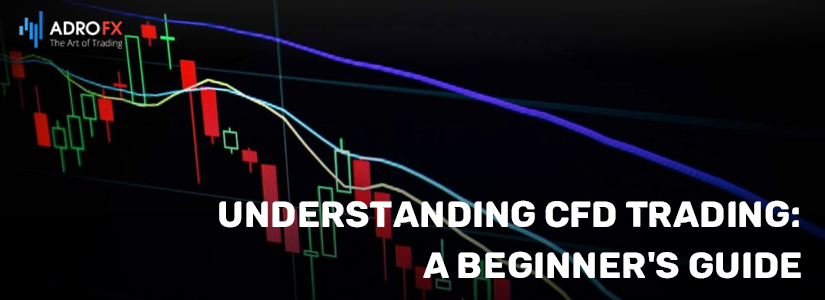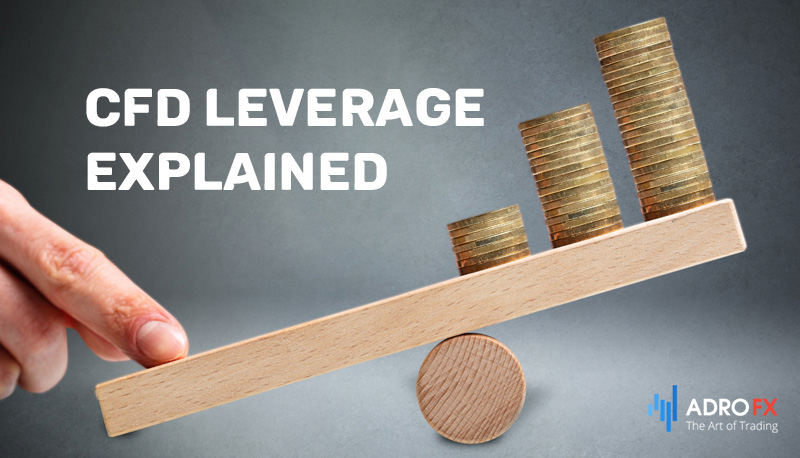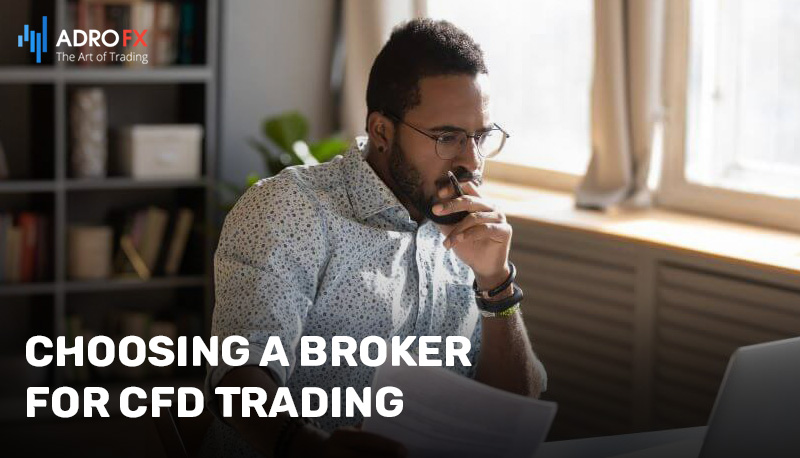Understanding CFD Trading: A Beginner's Guide

CFDs or Contracts for Difference are derivative products that allow traders to speculate on the price movements of various assets without actually owning them. They are a relatively new product that emerged at the end of the 20th century as a result of the internet revolution, which enabled traders to make short-term trades at the touch of a button. CFDs are offered by the most popular brokers today, and they allow for greater leverage and the ability to trade a wide range of markets, including stocks, indices, currencies, and commodities. In this article, we will explain the history of CFDs, how they work, and the pros and cons of trading them.
History of CFD
At the end of the 20th century, exchange trading underwent one of the biggest transformations in history. The Internet allowed traders to make short-term trades at the touch of a button. Intraday trading became one of the main trends - and the leading brokers quickly realized that this segment would be in great demand from private traders.
One of the main problems for trading remained the strict specialization of exchanges. Currency, stock, and futures exchanges existed separately from each other. As a result a trader, working with a currency broker, had no opportunity to benefit from futures or stocks.
It was possible to open one more account with another company, but such a decision is hardly optimal. Another problem was also evident: to capitalize on short-term transactions high leverage was required, and stock exchanges were traditionally kept away from risky marginal trading.
To solve these problems, employees of the UBS Investment Bank came up with a new exchange instrument, a contract for difference (CFD). It allowed to gain a yield from increase or decrease of the rate of exchange without purchasing the asset at the exchange. Now traders could trade shares, oil, and other commodities, working with a single broker. In addition, contracts for difference made it possible to trade with greater leverage.
With the lapse of time, CFD became to be offered by all popular brokers, including those operating in the forex market. Today, this tool is successfully used by both short-term traders and investors with a long planning horizon.

CFD Leverage Explained
CFDs allow margin trading, i.e. borrowing funds from a broker. In this case, we speak about the effect of leverage. For example, 1:50 leverage allows one to open a position for $50,000 having only $1,000 of own funds on the account.
The size of leverage in CFD depends on the underlying asset. For example, for shares it usually does not exceed 1:20, for oil, it often comes to 1:100.
Compared to the currency pairs in forex, 1:20 leverage does not seem that much. But you learn by comparison: in classic stock markets, equity leverage rarely exceeds 1:2.
How CFDs Work
If the Ask price per share is $171.23, and a trader buys 100 shares, the transaction will cost $171.23 plus commissions and fees.
This transaction would require at least $1,263 in free cash from a traditional broker in a margin account with a 50% credit, while CFD brokers in the recent past required only a 5% margin or $126.30.
When you open a CFD position, you will see a loss equal to the size of the spread at the time of the trade, so if the spread is 5 cents, the stock must rise by 5 cents for the position to reach a breakeven level.
If you owned the stock directly, you would make a 5 cents gain, but you would pay a commission and the resulting costs would be higher.
If in a traditional brokerage account, the offer price of a stock reaches $25.76, positions could be closed at a return of $50 or $50/1263 = 3.95%.
However, when the price reaches this level on the national exchange, the bid price on the CFD may be only $25.74.
The earnings of CFDs will be lower because the trader must exit the trade at the bid price, and in addition, the spread is greater than on a regular market. In this example, a CFD trader earns approximately $48 or $48/126.30 = 38% return on investment.
Why Trade CFDs
The classical forex market allows trading only currencies. The use of CFD significantly expands the list of trading instruments. Today, at most brokers it is possible to open a trade on gold, stocks, and even stock indices.
It is impossible to consider CFD as a direct replacement for an underlying asset. Although the contract price repeats the dynamics of the basic instrument, it may still be positive or negative.
Commissions for CFDs may also be different from those for the underlying, which is particularly important in longer-term trading. Now let us focus on the main pros and cons of this instrument.

Pros and Cons of Trading CFDs
CFD trading has its advantages and disadvantages. Here are some of the pros and cons of trading CFDs:
Pros:
- Leverage: CFD trading offers leverage, which means that you can trade with a smaller amount of capital than you would need to buy the underlying asset outright. This can potentially increase your earnings, but it also increases your risk.
- Access to a wide range of markets: CFD trading allows you to trade on a wide range of markets, including stocks, indices, currencies, and commodities. This can provide you with more opportunities to benefit ofit from market movements.
- Short-selling: With CFD trading, you can also take advantage of falling prices by short-selling. This means that you can sell an asset that you don't own, with the hope of buying it back at a lower price later.
- No stamp duty: In many countries, CFD trading is not subject to stamp duty, which can make it a more cost-effective way of trading.
Cons:
- High risk: CFD trading involves a high level of risk, as the leverage can amplify both your gains and your losses. This means that you can lose more than your initial investment.
- Hidden costs: Some CFD brokers charge hidden fees, such as overnight financing fees and spread mark-ups, which can erode your returns over time.
- Complexity: CFD trading can be complex, particularly for beginners. Understanding the risks and learning how to manage them effectively requires a significant amount of time and effort.
It's important to carefully consider these pros and cons before deciding to trade CFDs. It's also important to choose a reputable CFD broker and to develop a sound trading strategy that takes into account your risk tolerance and financial goals.
Risks of Trading CFDs
CFD trading (Contracts for Difference) involves a high level of risk, and it is important to be aware of these risks before you start trading. Here are some of the key risks associated with trading CFDs:
- Leverage risk: CFDs offer leverage, which means you can open positions that are larger than your account balance. While leverage can increase your potential earnings, it also increases your potential losses, so you need to manage your risk carefully.
- Market risk: CFDs are linked to the price movements of an underlying asset, and this price can be influenced by a range of factors, such as economic data, news events, and market sentiment. These factors can cause the price to fluctuate rapidly, which can lead to significant losses.
- Counterparty risk: When you trade CFDs, you are entering into a contract with the CFD provider. This means that you are exposed to counterparty risk, which is the risk that the provider may default on its obligations to you. It's important to choose a reputable CFD provider to reduce this risk.
- Operational risk: CFD trading platforms can experience technical issues, such as outages or errors, which can prevent you from opening or closing positions. This can lead to unexpected losses or missed opportunities.
- Liquidity risk: Some CFD markets may be illiquid, meaning there are few buyers or sellers in the market. This can make it difficult to enter or exit positions at the desired price, particularly during periods of high volatility.
- Hidden costs: Some CFD brokers may charge hidden fees, such as overnight financing fees and spread mark-ups, which can erode your gains over time.
It's important to understand and manage these risks when trading CFDs. This includes setting stop-loss orders to limit your potential losses, monitoring your positions closely, and using leverage responsibly. You should also choose a reputable CFD provider that is regulated by a financial authority, and that offers transparent pricing and good customer support.

Choosing a Broker for CFD Trading
When choosing a broker for CFD trading, the following parameters are at the forefront:
Reliability and reputation. In the case of CFD, the attitude to clients is especially strong: the instrument is not very popular, so if there is a lack of liquidity, the temptation to "draw the chart" or change the quote is especially great.
Number of CFDs for trading. We advise you to review the full list of contracts on the broker's website and make sure that the list contains everything you need.
Contract specifications. Find in the list those CFDs that you are going to work with on a regular basis. Make sure the spreads, commissions, and swaps are appropriate for your trading style. If high leverage is required, check with each CFD category.
For CFDs, AdroFx will be a great choice. It offers CFDs for all asset classes - from traditional forex trading to cryptocurrency and indices. The company has been providing brokerage services for 5 years and has earned an excellent reputation among market professionals.
Conclusion
CFDs give you access to all popular exchange-traded assets. They allow trading stocks, indices, and cryptocurrencies using the services of a single CFD broker.
Success in CFD trading lies in how much detail the trader has studied the specifics of a particular instrument. The best results are achieved by those who focus on one asset class or even a specific instrument. With solid knowledge and an in-depth understanding of price factors, you can outperform the market and get the earnings you deserve.
About AdroFx
Established in 2018, AdroFx is known for its high technology and its ability to deliver high-quality brokerage services in more than 200 countries around the world. AdroFx makes every effort to keep its customers satisfied and to meet all the trading needs of any trader. With the five types of trading accounts, we have all it takes to fit any traders` needs and styles. The company provides access to 115+ trading instruments, including currencies, metals, stocks, and cryptocurrencies, which make it possible to make the most out of trading on the financial markets. Considering all the above, AdroFx is the perfect variant for anyone who doesn't settle for less than the best.










